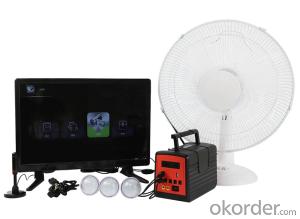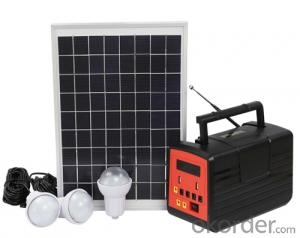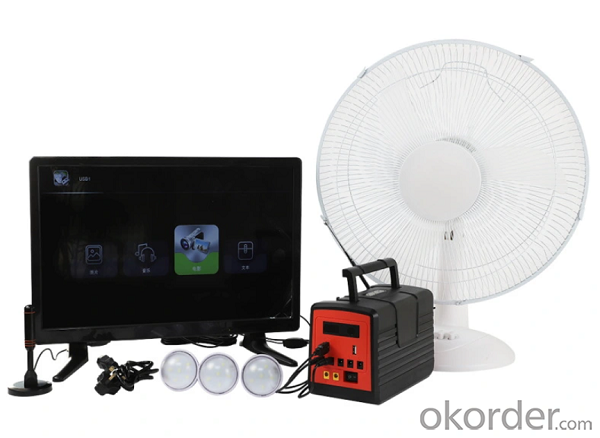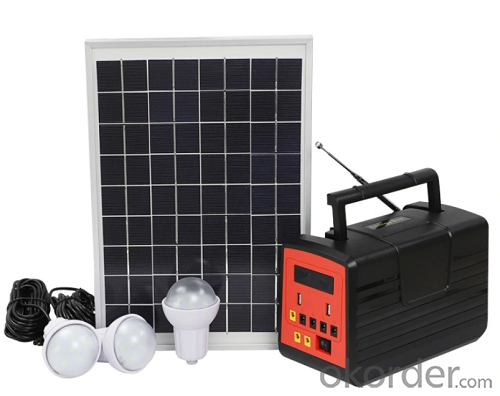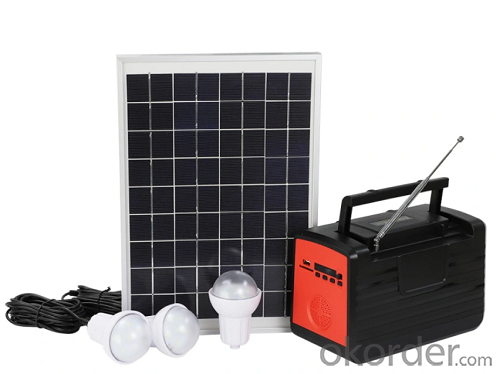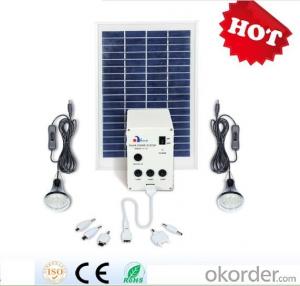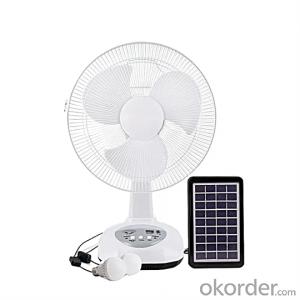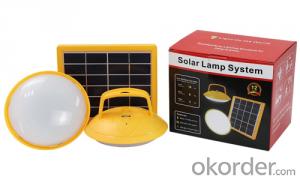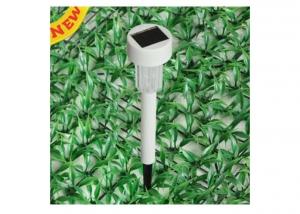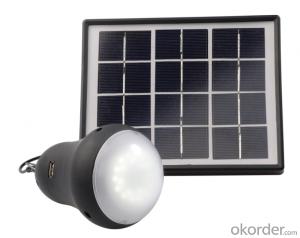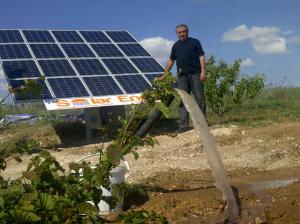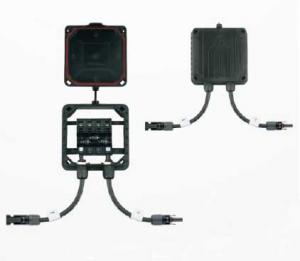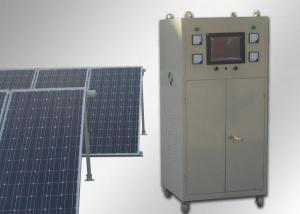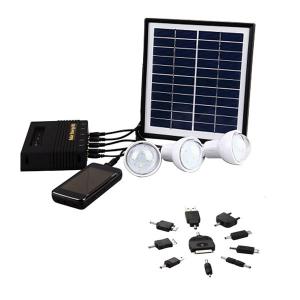Active Solar Energy Systems - Multifunctional Solar Home Lighting Energy System Generator with LED Bulbs
- Loading Port:
- Shekou
- Payment Terms:
- TT OR LC
- Min Order Qty:
- 10 set
- Supply Capability:
- 1000 set/month
OKorder Service Pledge
OKorder Financial Service
You Might Also Like
Specification

1. Specifications of Multifunctional Solar Home Lighting Energy System Generator with LED Bulbs
| Solar panel | 1*10W/18V | with 5m cable |
| Battery | 12V/7000mAh | SLA integrated battery |
| Lighting source | 3*3W LED bulbs | 50,000hrs lifespan |
| Working time | 27hrs for 1 bulb 18hrs for 2 bulbs 9hrs for 3 bulbs | afrer fully charged |
| Accessory | 1* 5 USB mobile charger 1* 5m connecting cable 3* 5m on/off cable | included |
Model NO.: PS-K025R
Working Time: 9-27 Hrs
Charging Time: 8 Hrs
Way of Charging: by Solar or by AC Adapter
Functions: Lighting/ Mobile Charging /DC Fan
Warranty: 1 Year Real Guaranty
Specification: CE, ROHS
Origin: Shenzhen, China
HS Code: 850131000
2. Advantages of Multifunctional Solar Home Lighting Energy System Generator with LED Bulbs
- Economic and energy saving
- After one day fully charge, support lighting for 9 hours for 3 bulbs
- Ideal for home use, such as cooking, room lighting, reading...
3. Images of Multifuntional Solar Home Lighting Energy System Generator with LED Bulbs


4. Delivery details
Sea transport: carton,pallet
- Q: Can solar panels generate electricity on cloudy days?
- Yes, solar panels can still generate electricity on cloudy days. While their efficiency may be reduced, they are capable of converting sunlight into electricity even under cloudy conditions.
- Q: Can solar energy systems be used for powering amusement parks or entertainment venues?
- Amusement parks and entertainment venues have the potential to utilize solar energy systems for their power needs. Solar power has emerged as a viable and sustainable alternative to traditional energy sources, offering various advantages for large-scale operations like amusement parks. These venues consume a significant amount of energy, especially during peak operating hours. By installing solar panels, they can generate clean and renewable energy on-site, reducing their reliance on fossil fuels and minimizing their carbon footprint. This not only helps combat climate change but also promotes environmental stewardship and sustainability. Solar energy systems can be tailored to meet the specific energy requirements of amusement parks. The expansive roofs of buildings, parking lots, and other open spaces can be utilized to install solar panels, maximizing energy generation potential. Moreover, advancements in solar technology, such as thin-film solar panels and solar canopies, offer innovative solutions to seamlessly integrate solar power into the park's infrastructure. One of the key advantages of solar power is its ability to generate electricity during peak demand periods, which often align with the peak operating hours of amusement parks. This ensures a reliable and uninterrupted power supply, guaranteeing a smooth and enjoyable experience for visitors. Furthermore, solar energy systems can be combined with battery storage solutions. Surplus energy produced during the day can be stored in batteries and utilized during the evening or on cloudy days, ensuring uninterrupted power supply even when the sun is not shining. This enhances the reliability and resilience of the park's energy infrastructure. In addition to the environmental and operational benefits, solar energy systems can also result in long-term cost savings. Although the initial investment may be higher, the ongoing operational costs are significantly lower compared to traditional energy sources. The savings generated from reduced electricity bills can be reinvested into improving park infrastructure, enhancing visitor experiences, and expanding attractions. Amusement parks and entertainment venues have a unique opportunity to demonstrate their commitment to sustainability and renewable energy by adopting solar power systems. By harnessing the power of the sun, these venues can not only reduce their environmental impact but also inspire visitors to make more sustainable choices in their own lives. To summarize, solar energy systems can indeed be used to power amusement parks and entertainment venues. The multitude of benefits, including environmental sustainability, reliable power supply, cost savings, and the opportunity to promote renewable energy, make solar power an excellent choice for powering these large-scale operations.
- Q: Can solar energy systems be used for powering off-grid space exploration missions?
- Yes, solar energy systems can be used for powering off-grid space exploration missions. Solar panels can be deployed on spacecraft to generate electricity by converting sunlight into usable energy. This approach is already being used in various space missions, such as the International Space Station and Mars rovers. Solar energy is a clean and renewable source of power, making it an ideal choice for off-grid missions where traditional power sources may not be accessible or practical.
- Q: Are there any safety certifications required for solar energy systems?
- Yes, there are safety certifications required for solar energy systems. In most countries, solar energy systems must meet certain safety standards and regulations before they can be installed and used. These certifications ensure that the solar panels, inverters, and other components of the system are manufactured and installed in a way that minimizes the risk of electrical hazards, fire, and other safety issues. One of the most common safety certifications for solar energy systems is the International Electrotechnical Commission (IEC) 61730 standard. This certification ensures that the solar panels meet specific safety requirements, including mechanical strength, resistance to environmental factors, and electrical insulation. It also includes tests for fire resistance, which is crucial to prevent potential hazards. Additionally, solar inverters, which convert the direct current (DC) generated by solar panels into the alternating current (AC) used in homes and businesses, also require safety certifications. The most widely recognized certification for inverters is the IEC 62109 standard, which verifies that the inverters meet safety requirements such as electrical insulation, protection against overvoltage and overcurrent, and proper grounding. Furthermore, the installation of solar energy systems must comply with local electrical and building codes, which often include safety requirements. These codes ensure that the system is installed correctly and safely, with proper wiring, grounding, and protection against electrical faults. It's important for solar energy system manufacturers, installers, and users to adhere to these safety certifications and regulations to ensure the safe and reliable operation of solar energy systems. By doing so, the risk of electrical accidents, fires, and other safety hazards can be minimized, providing peace of mind to both the system owners and the surrounding community.
- Q: Can solar energy systems be used in areas with limited water resources?
- Areas with limited water resources can use solar energy systems effectively. Solar energy systems rely on the sun's radiation to produce electricity or heat, eliminating the need for large amounts of water. Unlike traditional power plants, which rely on water for cooling and steam generation, solar energy systems do not require water-intensive processes. Solar photovoltaic (PV) systems convert sunlight directly into electricity, and they operate without the need for water. These systems consist of solar panels that capture sunlight and convert it into electricity through the photovoltaic effect. Therefore, they can be installed in areas with limited water resources without any impact on their functionality. Solar thermal systems, on the other hand, use sunlight to heat a fluid, such as water or oil, which is then used for electricity generation or heating. While these systems may require some water for cleaning or maintenance, the water requirements are relatively low compared to traditional power plants. Additionally, advancements in solar thermal technology have led to the development of dry-cooling systems that significantly reduce water consumption. Furthermore, solar energy systems can be combined with other technologies to further minimize water usage. Solar-powered desalination plants, for example, can convert seawater or brackish water into freshwater through reverse osmosis, without relying on traditional energy sources or fossil fuels. This integration of solar energy and desalination can provide clean drinking water in areas with limited freshwater resources, alleviating the strain on water supplies. In conclusion, solar energy systems are suitable for areas with limited water resources as they primarily operate on sunlight and require minimal water for functioning. Using solar power not only reduces greenhouse gas emissions and dependence on fossil fuels but also addresses water scarcity issues in these regions.
- Q: Can solar energy systems be used for powering electric vehicle solar charging roads?
- Yes, solar energy systems can be used to power electric vehicle solar charging roads. Solar panels can be installed alongside or on top of the roads, converting sunlight into electricity. This electricity can then be used to power electric vehicle charging stations located along the roads, allowing vehicles to charge their batteries while driving. This innovative technology can help reduce dependence on fossil fuels and promote sustainable transportation options.
- Q: Are there any risks of electrical grounding issues with solar energy systems?
- Solar energy systems can pose several risks due to electrical grounding issues. One major risk is the potential for electric shock, which occurs when the grounding system is not correctly installed or maintained. This can cause a buildup of electrical current, leading to contact with live electrical components and subsequent shock. Another risk is the possibility of fire. When the grounding system is improperly installed, it can result in electrical arcing, which can ignite a fire. This is especially hazardous as solar energy systems are often situated on rooftops, making it easier for a fire to rapidly spread throughout the entire building. Furthermore, a faulty grounding system can cause damage to the solar energy system itself. Without proper grounding, electrical surges and fluctuations can occur, harming sensitive components like inverters and batteries. To mitigate these risks, it is essential to ensure the proper installation and regular inspection and maintenance of the grounding system in a solar energy system. This involves using appropriate grounding equipment like grounding rods or conductors, as well as ensuring all connections are secure and free from corrosion. Regular testing should also be carried out to assess the effectiveness of the grounding system. It is advisable to enlist the services of a qualified professional for the installation and maintenance of the grounding system to minimize the hazards associated with electrical grounding issues in solar energy systems.
- Q: Can solar panels be installed on agricultural land without affecting crop production?
- Yes, solar panels can be installed on agricultural land without significantly affecting crop production. By utilizing techniques such as elevated panel mounting, rotational grazing, and optimizing panel spacing, farmers can ensure that solar panels are installed in a way that minimizes shading and allows crops to receive adequate sunlight. Additionally, solar panels can provide dual-use benefits by creating shaded environments that can benefit certain crops, reducing water evaporation and weed growth. Proper planning and design, along with open communication between solar developers and farmers, can help ensure that solar installations and agricultural activities can coexist harmoniously.
- Q: What is the difference between a solar power purchase agreement (PPA) and a solar lease?
- A solar power purchase agreement (PPA) involves a contractual agreement between a solar energy provider and a consumer, where the consumer agrees to purchase the electricity generated by the solar system at a predetermined rate over a specified period of time. On the other hand, a solar lease is a contract that allows a consumer to lease a solar energy system from a provider, paying a fixed monthly fee to use the system and benefit from the electricity it generates. The main difference between the two is that in a PPA, the consumer only pays for the electricity they consume, while in a solar lease, they pay a fixed monthly amount regardless of the amount of electricity generated. Additionally, in a PPA, the provider is responsible for the installation, maintenance, and operation of the solar system, whereas in a solar lease, the consumer is typically responsible for the maintenance and operation.
- Q: What is the efficiency of solar energy systems?
- The efficiency of solar energy systems refers to the amount of sunlight that is converted into usable energy. It is typically measured as a percentage of the total sunlight that strikes the surface of the solar panels and is converted into electricity. The efficiency of solar energy systems can vary depending on various factors such as the type of solar panel technology used, the quality of the panels, the location and orientation of the panels, and environmental conditions. On average, the efficiency of solar panels available in the market today ranges from around 15% to 20%. However, there are more advanced solar panel technologies, such as monocrystalline and polycrystalline panels, that can achieve higher efficiencies, up to 25%. It is worth noting that the efficiency of solar panels is constantly improving due to advancements in technology and research. Scientists and engineers are continuously working to develop more efficient solar cells and panel designs to harness more energy from the sun. Furthermore, it is important to consider that the efficiency of solar energy systems is not the only factor to consider when evaluating their overall performance. Other factors like the cost of installation, maintenance requirements, and the availability of sunlight in a particular area are also important considerations when determining the effectiveness and suitability of solar energy systems.
Send your message to us
Active Solar Energy Systems - Multifunctional Solar Home Lighting Energy System Generator with LED Bulbs
- Loading Port:
- Shekou
- Payment Terms:
- TT OR LC
- Min Order Qty:
- 10 set
- Supply Capability:
- 1000 set/month
OKorder Service Pledge
OKorder Financial Service
Similar products
Hot products
Hot Searches
Related keywords
